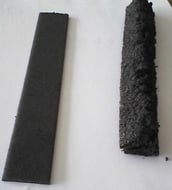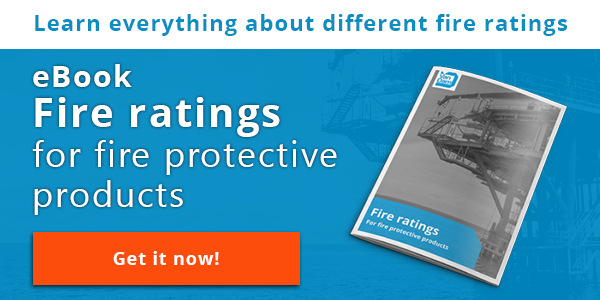
Compartmentalization is a key aspect in Passive Fire Protection (PFP). This is achieved by dividing the spaces with fire blast rated walls, doors and windows, in smaller sections. Each compartment has its own fire rating and is designed to prevent or slow the spread of cellulosic or hydrocarbon fires.
Intumescent seals
A fire and blast protective product has two main purposes. Primarily, it is to resist the passage of fire  and additionally it helps to resist the passage of smoke. Often, the overall design of the product already ensures fire and smoke resistance. However, applying an intumescent seal makes this more efficient and effective. For instance, an intumescent seal can close bigger gaps of approximately 20 mm locally.
and additionally it helps to resist the passage of smoke. Often, the overall design of the product already ensures fire and smoke resistance. However, applying an intumescent seal makes this more efficient and effective. For instance, an intumescent seal can close bigger gaps of approximately 20 mm locally.
An intumescent seal consists of an intumescent substance that swells into a stable, low-pressure, foam-like material after being exposed to heat. The volume increase fills the gap between doors and frames, windows and frames and within fire-resistant glass. In this way, the passage of fire, toxic gasses and smoke is prevented.
Features of intumescent materials
Intumescent materials react to a heat temperature of 150-200 oC (302-392 oF). Once the material is swollen, it is irreversible and needs to be replaced. In its swollen form, it acts as an excellent seal against fire and smoke. The material is UV-resistant and can withstand moisture ingress. The swollen, or foam-like material, is durable and easily withstands aging.
These characteristics allow for the material to be very low maintenance, and as long it does not have to react to heat, it can last for a very long time.
Do you want to have more information on how to ensure protection against fire? Download our eBook fire ratings for fire protective products.







